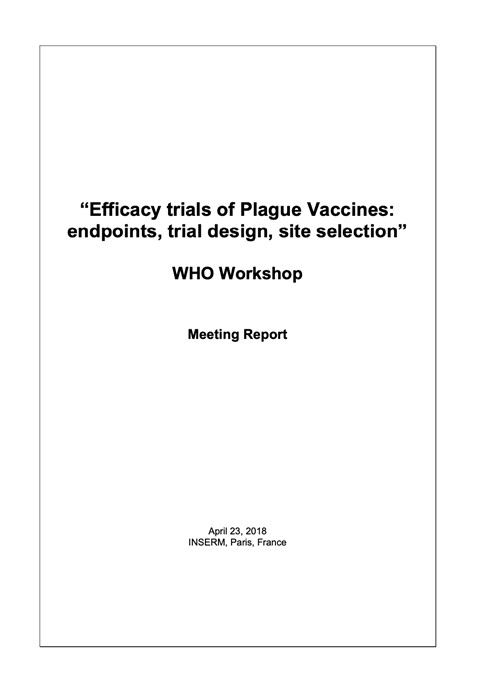Efficacy trials of Plague Vaccines: endpoints, trial design, site selection WHO Workshop
WHO Workshop

Overview
Plague is an infectious disease caused by Yersinia pestis, a zoonotic bacterium, usually found in small mammals and their fleas. As an animal disease, plague is found in all continents, except Oceania. There is a risk of human plague wherever the presence of plague natural foci (the bacteria, an animal reservoir and a vector), and the human population co-exist. There are large plague reservoirs in African, Asian, and South American continents; but since the 1990s, most human cases have occurred in Africa. Plague endemicity throughout the world has resulted in sporadic infections, including recent outbreaks in the 21st century. The three countries with most reported cases in recent years are the Democratic Republic of Congo, Madagascar, and Peru. In 2017, there was a large plague outbreak in Madagascar. There are effective therapeutics to treat plague although evidence of antibiotic-resistance has been observed in Y. pestis strains naturally or those deliberately developed to serve as a biothreat agent. Antibiotic treatment and post-exposure prophylaxis are generally initiated on plague suspected cases (i.e., before laboratory confirmation of plague infection), given the extremely short incubation and infectious period of plague infection.
